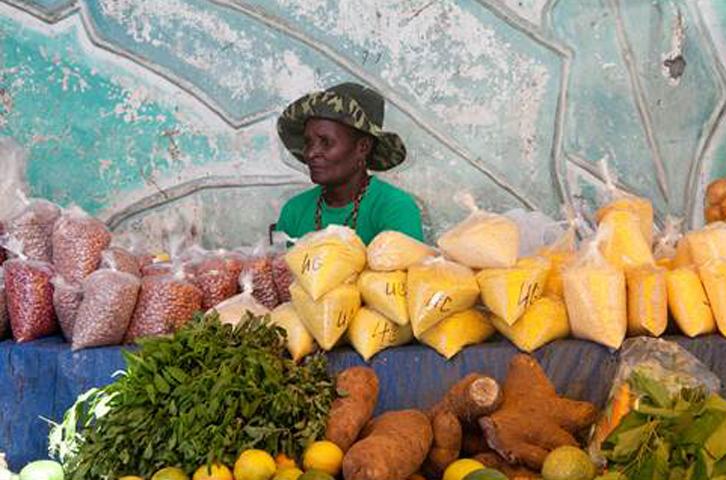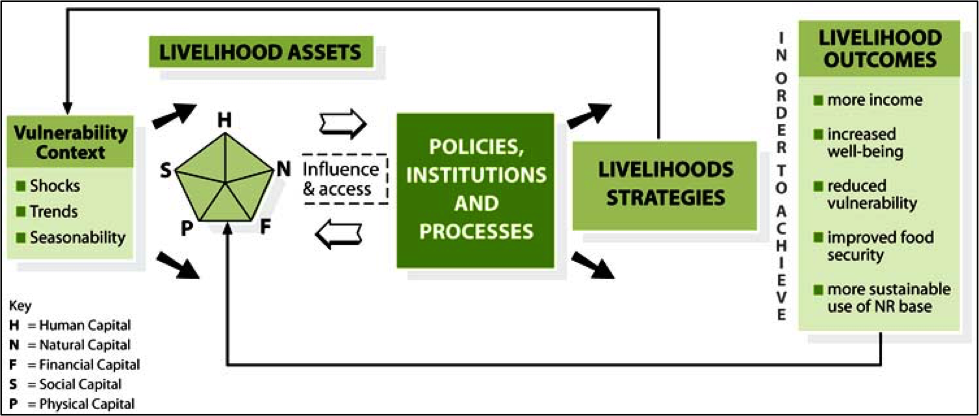Difference between revisions of "Fuentes de sustento y el acceso a la alimentacion"
CarolinaOM (talk | contribs) (Created page with "Image:access to food.jpg|thumb|right|200px|Source: [https://ec.europa.eu/europeaid/regions/african-caribbean-and-pacific-acp-region/acp-multi-country-cooperation/food-securi...") |
CarolinaOM (talk | contribs) |
||
| Line 1: | Line 1: | ||
[[Image:access to food.jpg|thumb|right|200px|Source: [https://ec.europa.eu/europeaid/regions/african-caribbean-and-pacific-acp-region/acp-multi-country-cooperation/food-security-and_en ec.europa.eu]]] | [[Image:access to food.jpg|thumb|right|200px|Source: [https://ec.europa.eu/europeaid/regions/african-caribbean-and-pacific-acp-region/acp-multi-country-cooperation/food-security-and_en ec.europa.eu]]] | ||
| − | + | ||
| + | Los "medios de subsistencia" de una persona se caracterizan por el aseguramiento de las necesidades básicas para poder vivir. Estas incluyen la " nutrición", el agua potable, los medicamentos, el alojamiento y las vestimentas requeridas. | ||
| + | |||
| + | Los medios de subsistencia se definen como las actividades para adquirir estas necesidades, para satisfacer de un forma digna y sustentable las necesidades del individuo y de su hogar. | ||
| + | El acceso asegurado a tipos de alimentación desempeña un papel fundamental para los medios de subsistencia. | ||
The sustainable livelihoods framework was developed by the UK Department for International Development (DFID). It presents the main factors that affect people’s livelihoods, and typical relationships between these. In brief, the framework: | The sustainable livelihoods framework was developed by the UK Department for International Development (DFID). It presents the main factors that affect people’s livelihoods, and typical relationships between these. In brief, the framework: | ||
Revision as of 03:32, 3 August 2015

Los "medios de subsistencia" de una persona se caracterizan por el aseguramiento de las necesidades básicas para poder vivir. Estas incluyen la " nutrición", el agua potable, los medicamentos, el alojamiento y las vestimentas requeridas.
Los medios de subsistencia se definen como las actividades para adquirir estas necesidades, para satisfacer de un forma digna y sustentable las necesidades del individuo y de su hogar. El acceso asegurado a tipos de alimentación desempeña un papel fundamental para los medios de subsistencia.
The sustainable livelihoods framework was developed by the UK Department for International Development (DFID). It presents the main factors that affect people’s livelihoods, and typical relationships between these. In brief, the framework:
- provides a checklist of important issues and sketches out the way that these link to each other;
- draws attention to core influences and processes; and
- emphasizes the multiple interactions between the various factors which affect livelihoods
The framework includes the following assets:
- human capital (the education, skills and health of household members),
- physical capital (e.g. farm equipment, cattle or a sewing machine),
- social capital (the social networks and associations to which people belong),
- financial capital and its substitutes (savings, credit, cattle, etc.) and
- natural capital (natural resource base).
Both the access to these assets and their use are mediated by:
a) social factors,
b) exogenous trends (e.g. economic trends) and
c) shocks (e.g. droughts, disease, floods, pests) ).
The use of the asset also determines to which category an asset belongs: cattle can be considered physical as well as financial capital.
A livelihood can be defined as the activities, the assets, and the access that jointly determine the living gained by an individual or household.
The framework provides insights on the link between income and food security, which are both presented as livelihood outcomes. Although more income could contribute to improved food security the framework reflects that more income is neither a guarantee nor a condition for improved food security. Sustainable improvement of food security security goes beyond increased access to food and requires a multi-sector approach. This livelihood approach can be instrumental.
Livelihood diversification is defined as the process by which households construct a diverse portfolio of activities and social support capabilities for survival and in order to improve their standard of living. Livelihood diversification contributes to the sustainability of a rural livelihood as it improves the long-run resilience. The traditional role of agriculture in producing food and generating income is fundamental. However, farming on its own is increasingly unable to provide a sufficient means of survival in rural areas. The diversity of livelihoods is an important feature of rural survival, including food security.
Men and women have different assets, access to resources, and opportunities. Women rarely own land, may have lower education due to discriminatory access during childhood, and their access to productive resources as well as decision-making tend to occur through the mediation of men. Women typically confront a narrower range of labor markets than men, and lower wage rates. In general, diversification is more of an option for rural men than for women. Therefore special attention for the position and potential of women is required at all levels and stages of development programs. The practical toolkit on how to integrate a gender perspective in agricultural value chains, elaborated by AgriProFocus, provides hands-on ideas and examples.
Acknowledgements
- ODI. Rural Livelihood diversity in developing countries: evidence and policy implications, by F. Ellis. 1999
- DFID. Sustainable Livelihoods Guidance Sheets, April 1999.
- Agri-ProFocus learning network, Gender in Value Chains


